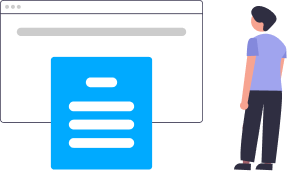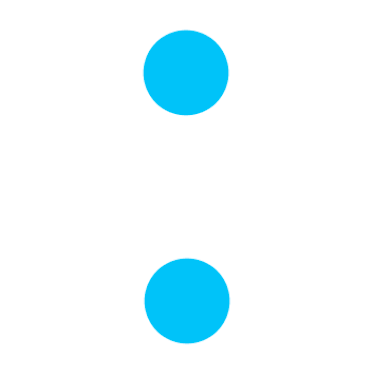MODULE - 1 Est. Duration: 57 min
MODULE - 2 Est. Duration: 48 min
MODULE - 3 Est. Duration: 1 hr 9 min
MODULE - 4 Est. Duration: 41 min
MODULE - 5 Est. Duration: 42 min
MODULE - 6 Est. Duration: 23 min
MODULE - 7 Est. Duration: 56 min
MODULE - 8 Est. Duration: 25 min
MODULE - 9 Est. Duration: 17 min
MODULE - 10 Est. Duration: 24 min
Unit 14 .2
WORD FORMATION - XV
Est. Duration: 6 Minutes
Bookmark This
The letters ‘suaad’ and ‘zuaad’ are also connectors and follow the same principles of joining as we’ve seen earlier.
14.2.1: In the Initial position
Let’s look at the shortened form that these letters assume in the initial position when joining with ‘alif’:
- saa
- सा
Above: Notice how the ‘suaad’ connects with the ‘alif’
Letters of the 'suaad' group, being connectors, change shape when joining with other letters and take upon the following short-form:
- suaad
- सुआद
- suaad
- सुआद
Above: Comparative showing ‘suaad’ in its full and short forms
Here’s an animated view of the words “saa” (सा) and “zaa” (ज़ा):
- zaa
- ज़ा
- saa
- सा
Above: Animation showing how the words “saa” and “zaa” are written
The letters ‘suaad’ and ‘zuaad’ are also connectors and follow the same principles of joining as we’ve seen earlier.
And now let’s look at some more words where 'suaad' group letters appear in the initial position. Let’s start with “sabaa” (सबा):
- sabaa
- सबा
- alif
- अलिफ़
- be
- बे
- suaad
- सुआद
Above: ‘suaad’ + ‘be’ + ‘alif’ = “sabaa”
Here’s another one - “sadr” (सद्र):
- sadr
- सद्र
- re
- रे
- daal
- दाल
- suaad
- सुआद
Above: ‘suaad’ + ‘daal’ + ‘re’ = “sadr”
Here’s a commonly used word - “zid” (ज़िद):
- zid
- ज़िद
- daal
- दाल
- zuaad
- जुआद
Above: ‘zuaad’ + ‘daal’ = “zid”
Let’s take it a step further and let’s create the word - “ziddii” (ज़िद्दी):
- ziddii
- ज़िद्दी
- chhoTii ye
- छोटी ये
- tashdiid
- तश्दीद
- daal
- दाल
- zuaad
- जुआद
Above: ‘zuaad’ + ‘daal’ + ‘tashdiid’ + ‘chhoTii ye’ = “ziddii”
INTERESTING
Notice the usage of the tashdiid we’ve learnt earlier to emphasize the ‘d’ sound of the ‘daal’ in there.
14.2.2: In the Medial position
In the medial position, the short-form of the 'suaad' group letters changes slightly just like we’ve seen earlier with the 'siin' group. This can be seen in the word “nasb” (नस्ब), meaning “establish”:
- nasb
- नस्ब
Above: How the word “nasb” is written. Notice the slight change in the short-form of ‘suaad’.
Here’s a comparison illustrating this short-form in the medial position:
- suaad
- सुआद
- suaad
- सुआद
Above: Comparative showing ‘suaad’ in its full and short forms in the medial positon
And, here’s a break-down of the word “nasb”:
- nasb
- नस्ब
- be
- बे
- suaad
- सुआद
- nuun
- नून
Above: ‘nuun’ + ‘suaad’ + ‘be’ = “nasb”
Which essentially is:
- nasb
- नस्ब
- be
- बे
- suaad
- सुआद
- nuun
- नून
Above: ‘nuun’ + short-form of ‘suaad’ + ‘be’ = “nasb”
Similarly, here’s the word “nasiir” (नसीर):
- nasiir
- नसीर
- re
- रे
- chhoTii ye
- छोटी ये
- suaad
- सुआद
- nuun
- नून
Above: ‘nuun’ + ‘suaad’ + ‘chhoTii ye’ + ‘re’ = “nasiir”
Moving on, here’s another one - “hazrat” (हज़रत):
- hazrat
- हज़रत
- te
- ते
- re
- रे
- zuaad
- जुआद
- he
- हे
Above: ‘he’ + ‘zuaad’ + ‘re’ + ‘te’ = “hazrat”
14.2.3: In the Final position
In the final position, ‘suaad’ and ‘zuaad’ do not change shape. Here’s the word “nabz” (नब्ज़) as example:
- nabz
- नब्ज़
Above: How the word “nabz” is written. The ‘zuaad’ does not change shape in the final position.
Here’s an example of a commonly used word - “KHaas” (ख़ास):
- KHaas
- ख़ास
- suaad
- सुआद
- alif
- अलिफ़
- KHe
- ख़े
Above: ‘KHe’ + ‘alif’ + ‘suaad’ = “KHaas”
And here’s another one - “naaraaz” (नाराज़):
- naaraaz
- नाराज़
- zuaad
- जुआद
- alif
- अलिफ़
- re
- रे
- alif
- अलिफ़
- nuun
- नून
Above: ‘nuun’ + ‘alif’ + ‘re’ + ‘alif’ + ‘zuaad’ = “naaraaz”
14.2.4: Some more words
Here are a few more words with these new letters we’ve just added to our arsenal.
- saabir
- साबिर
- saahab
- साहब
- saabun
- साबुन
- sabr
- सब्र
- seht
- सेह्त
- sahraa
- सहरा
- sadaa
- सदा
- sadr
- सद्र
- sadaarat
- सदारत
- sadii
- सदी
- suurat
- सूरत
- sahiih
- सहीह
- sahan
- सहन
- zarb
- ज़र्ब
- zarar
- ज़रर
- zaruur
- ज़रूर
- ziyaa
- ज़िया
- zid
- ज़िद
- ziddii
- ज़िद्दी
- israar
- इसरार
- ansaar
- अंसार
- basaarat
- बसारत
- basiir
- बसीर
- nasiir
- नसीर
- hisaar
- हिसार
- KHosuus
- ख़ोसूस
- hissa
- हिस्सा
- shaKHsiyyat
- शख़्सिय्यत
- haazir
- हाज़िर
- huzuur
- हुज़ूर
- hazrat
- हज़रत
- razaa
- रज़ा
- vazaahat
- वज़ाहत
- vaazeh
- वाज़ेह
- raazii
- राज़ी
- KHaas
- ख़ास
- shaKHs
- शख़्स
- hirs
- हिर्स
- arz
- अर्ज़
- bayaaz
- बयाज़
- naaraaz
- नाराज़
- nabz
- नब्ज़
- hauz
- हौज़
saabir
साबिर
Great. Let’s move on to briefly looking at another very interesting aspect of these letters we’ve just learnt.





.png)


